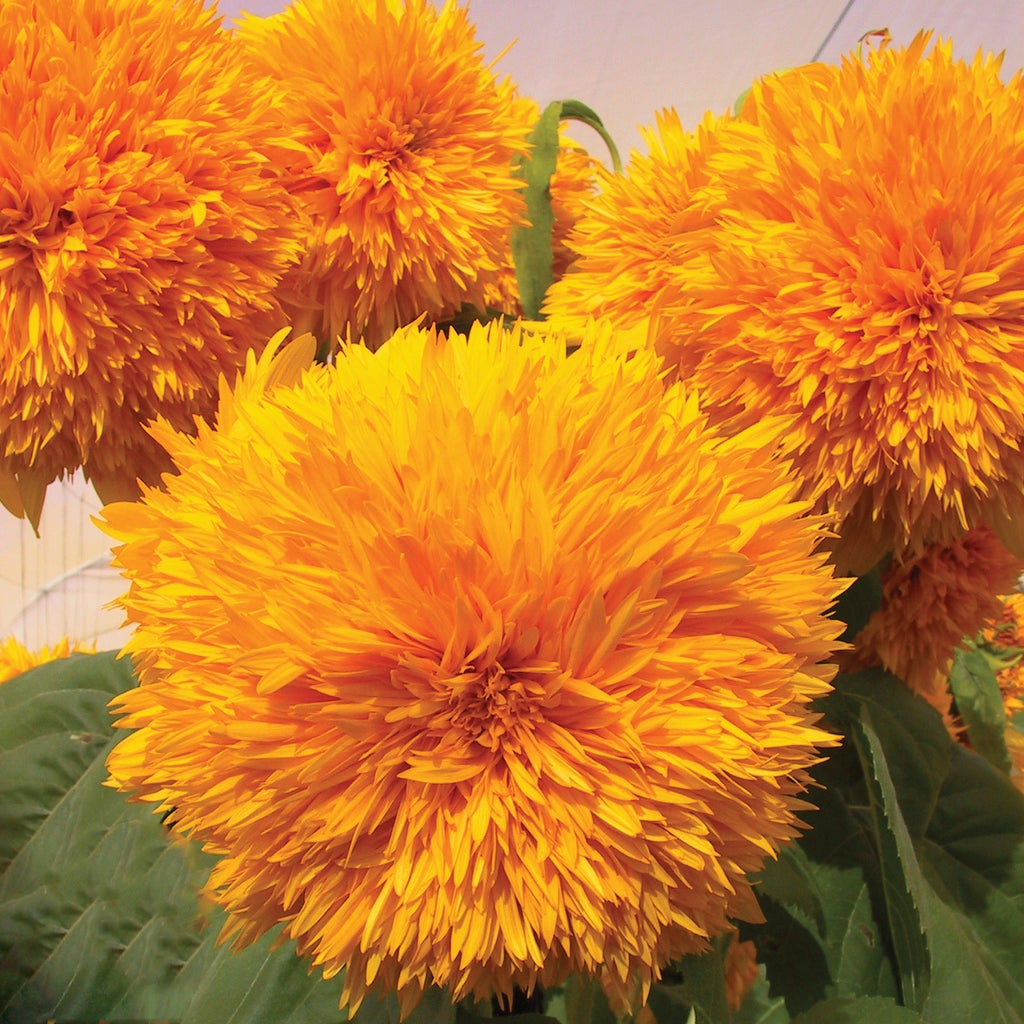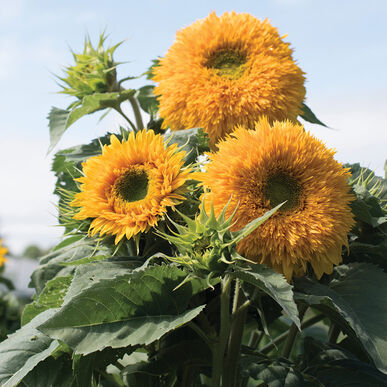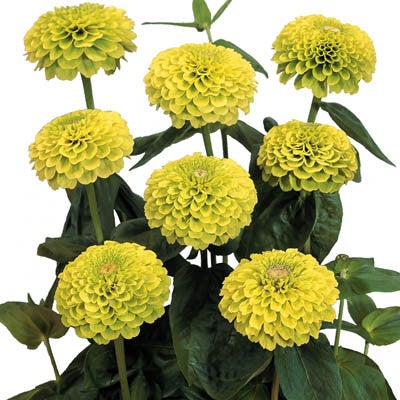Current Year Flowers (Available June onwards.)

Ageratum is one of the truest blue annuals you can find. Sometimes referred to as a floss flower, Ageratum has playful, small blooms that look like tiny pom-poms covered with floss-like filaments. They are known as one of the best annuals for cutting. However, all parts of this plant are poisonous if ingested, so site ageratum carefully if you have small children and pets around.

Ideal color and form for late summer and fall arrangements. More useful than other upright types because of its gracefully arched, feathery plumes. Compared to Opopeo, Red Spike's flower heads are darker red, more arched, and airier. When plants are young and leaves are tender, the foliage makes a nice edible green. Also known simply as amaranth. Ht. 48-60.-

With the name Bee balm, this ornamental flower attracts not only bees, but hummingbirds and other beneficial pollinators. Bee balms are highly valued for their deep scarlet color, but also come in blue, violet, white and-pink.

There are few flowers as showy as celosia. Whether you plant the plumed type, with its striking upright spires, or the crested type with its fascinating twisted form, you'll love using celosia in bouquets. The flowers are beautiful fresh, but they can be dried easily if hung upside down. And they bloom in the striking colors of a glowing sunset. Large bright plumes grow tall enough to make it ideal for cutting. Also an excellent mix for packs, pots and bedding. Colors include cream, orange, red, salmon and yellow.

There are few flowers as showy as celosia. Whether you plant the plumed type, with its striking upright spires, or the crested type with its fascinating twisted form, you'll love using celosia in bouquets. The flowers are beautiful fresh, but they can be dried easily if hung upside down. And they bloom in the striking colors of a glowing sunset. Feathery plumes on strongly branching plants make this series one of the popular celosias for cut flower production. Soft pink, turning to white.

There are few flowers as showy as celosia. Whether you plant the plumed type, with its striking upright spires, or the crested type with its fascinating twisted form, you'll love using celosia in bouquets. The flowers are beautiful fresh, but they can be dried easily if hung upside down. And they bloom in the striking colors of a glowing sunset. Large feathery plumes are a great textural addition to bouquets. A mix of yellow, orange, pink and red. Pinch initial bud to increase branching. Height: 30-40-.

Semidouble blooms in shades of lavender, salmon, magenta, and pale to bright pinks are useful as cut and edible flowers. Also known as Beebalm, Oswego tea, and Scarlet Beebalm.

4-6 blooms have classic Sunflower coloring of golden petals and dark brown disk. Pollenless and day neutral. Single stem.

Large fully double flowers on sturdy branching plants. Flowers open up semi-double, then mature to fully double.

Fully-double, bright golden flowers. 5-7 blooms with green-to-yellow centers. Stems 18-24 long. Minimal pollen. USDA Certified Organic.

Orange petals and a dark disk. Tall, with strong stems. 4-6 blooms. Pollenless. Single stem.

Muted red petals with a dark brown disk. Single stemmed, pollen-free, 3 to 4 flowers. Day length neutral. Matures in approximately 50 days.

Unique bicolor flower pattern sets this beauty ablaze with autumn colors. Blooms average 5-6 across. Stem length is 16-34. Minimal pollen. Flower buds can be fried and the petals used as a garnish in salads and desserts; the flavor is bittersweet.

First sunflower to win an All-America Selections award. One of the best branching sunflowers for cutting with large flowers and sturdy stem.

4-6 blooms, golden yellow rays, dark brown disk. Pollenless. Single stem.

More rounded petals and shorter, more rigid stems with reduced lower leaves make this an excellent variety for bouquet work. 4-6 flower heads. Pollenless. Single stem.

Novel PURPLE sunflower. 3-4 geometric flower heads for use as bouquet greenery. Petals are green at the center, fading to purple. Highly ornamental sepals that wrap the flower face, creating that look typically only found on the back of the flower. Sunflower heads produce very small and few petals, allowing for the calyx to cover the face of the bloom at harvest. Pollenless. Single stem. Recommended for cutting only.

4-6 bloom size. Highly uniform sunflowers. Ideal for cut flower d-cor. Pollenless. Single stem.

The Benary's series produces long, thick stems that are less likely to bend when being cut than other zinnias. The 3 to 4 flowers are produced in clear, bright uniform colors that catch the eye.

The Benary's series produces long, thick stems that are less likely to bend when being cut than other zinnias. The 3 to 4 flowers are produced in clear, bright uniform colors that catch the eye.

The Benary's series produces long, thick stems that are less likely to bend when being cut than other zinnias. The 3 to 4 flowers are produced in clear, bright uniform colors that catch the eye.

The Benary's series produces long, thick stems that are less likely to bend when being cut than other zinnias. The 3 to 4 flowers are produced in clear, bright uniform colors that catch the eye.

The Benary's series produces long, thick stems that are less likely to bend when being cut than other zinnias. The 3 to 4 flowers are produced in clear, bright uniform colors that catch the eye.

The Benary's series produces long, thick stems that are less likely to bend when being cut than other zinnias. The 3 to 4 flowers are produced in clear, bright uniform colors that catch the eye.

The Benary's series produces long, thick stems that are less likely to bend when being cut than other zinnias. The 3 to 4 flowers are produced in clear, bright uniform colors that catch the eye.

The Benary's series produces long, thick stems that are less likely to bend when being cut than other zinnias. The 3 to 4 flowers are produced in clear, bright uniform colors that catch the eye.

The Benary's series produces long, thick stems that are less likely to bend when being cut than other zinnias. The 3 to 4 flowers are produced in clear, bright uniform colors that catch the eye.

The Benary's series produces long, thick stems that are less likely to bend when being cut than other zinnias. The 3 to 4 flowers are produced in clear, bright uniform colors that catch the eye.